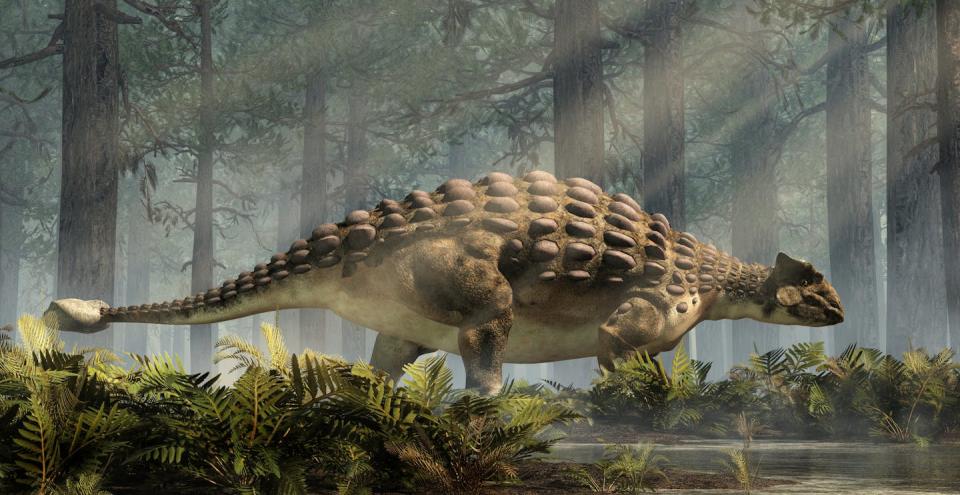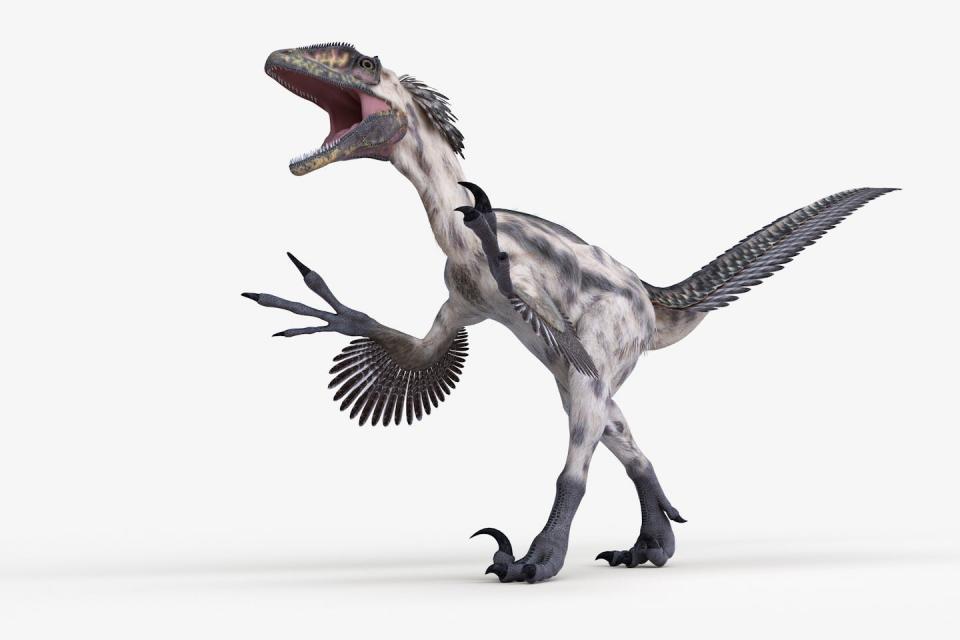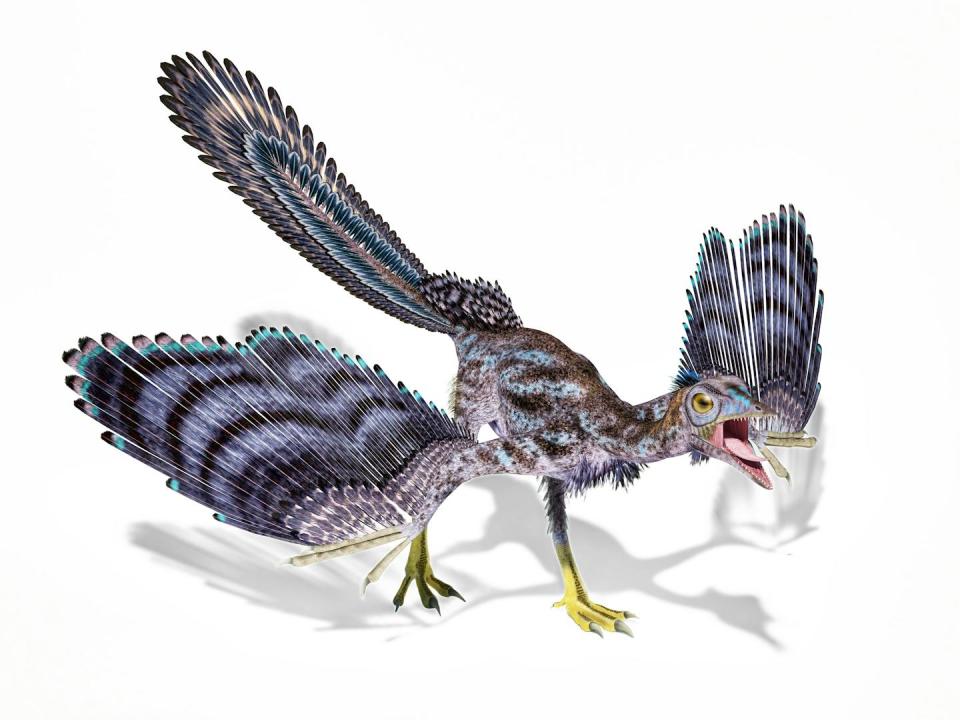

Curious Kids is a series for children of all ages. If you have a question you’d like an expert to answer, send it to curiouskidsus@theconversation.com.
Do dinosaurs still exist in some parts of the world today? – Ruben M., age 5
Did all dinosaurs become extinct, killed when an asteroid hit the Earth 66 million years ago? Or could a few of them, somehow, have survived that mass extinction event – with their descendants living even today?
It is exciting to imagine that gigantic dinosaurs are still rumbling and lumbering around in some remote part of the world. But no evidence of this exists. There are no cousins of Tyrannosaurus rex stomping through the vast woods of Siberia, no Apatosaurus ambling through the Congo rainforest.
As a paleontologist, I have spent much of my life studying ancient animals, particularly dinosaurs. But I have seen only fossils of these creatures, nothing living – with one exception. One group of dinosaurs is still around. To find them, just go outside and look up.


The killer asteroid
In 1977, American geologist Walter Alvarez was working in the Apennine mountains in Italy. There, he found a thin layer of clay with an unusual amount of a metal called iridium in it. The clay was in between rocks from the Cretaceous and Paleogene periods and dates from the time the dinosaurs disappeared.
Iridium is rare on Earth but more common in some meteorites. Working with his father, Luis, who was a Nobel-Prize-winning physicist, Walter Alvarez developed the theory that a giant space rock – an asteroid – collided with Earth 66 million years ago. This impact left iridium traces around the world and triggered the unimaginable disaster that killed the dinosaurs and countless other species of animals and plants on land and in the sea.
At first, many scientists rejected the theory. But then, in 1991, geologists discovered a huge crater buried under the sea floor off the Yucatán Peninsula of Mexico. This spot was where an asteroid, about 6 miles (10 kilometers) across, crashed into our planet 66 million years ago.
The collision was so powerful it sent trillions of tons of dust and molten rock into the sky. Many pieces of molten rock fell back to Earth, causing huge wildfires everywhere. A thick blanket of dust in the atmosphere blocked most sunlight, leading to freezing temperatures worldwide. Earth turned into a cold, desolate place for many years, even centuries.
The loss of sunlight killed many plants. With no food available for them, big plant-eating dinosaurs like Triceratops quickly went extinct. That left big predators like Tyrannosaurus rex without prey animals to eat, so they died, too.
But smaller animals like mammals, lizards and turtles could adapt. They could hide in burrows and live on a wide variety of foods. Fish lived in rivers and lakes and were protected by their watery homes. And surviving with them: birds, the only remaining dinosaurs.


The bird connection
Fast-forward about 66 million years: Scientists noticed in the 19th century how the skeletons of modern birds and fossilized dinosaurs were alike in many ways. The similarities in the legs and feet were especially striking. However, most scientists then thought dinosaurs and birds were too different to be closely related.
Then, in 1964, dinosaur expert John Ostrom discovered fossils of the dinosaur Deinonychus. It had a mouth full of sharp teeth with serrated edges like steak knives, long slender hands with three fingers ending with large, curved claws, and a huge claw on the second toe of each foot. A fast hunter that did not fit the traditional ideas about dinosaurs as slow and not very active, Deinonychus lived in North America during the Cretaceous period, about 110 million years ago.
For another research project in the early 1970s, Ostrom examined the earliest known bird, Archaeopteryx, which lived 150 million years ago in what is now Germany. It had feathered wings and a wishbone, along with reptilelike traits, including jaws with sharp teeth, hands with three fingers each, and a long tail.
Comparing this ancient bird with Deinonychus, Ostrom realized their skeletons shared many special features. For example, both had unusually long arms and hands, a very flexible wrist, hollow bones and an S-shaped neck.
Based on these and many other similarities, Ostrom showed that birds descended from small, predatory, birdlike dinosaurs.


In the past three decades, paleontologists have discovered many skeletons of ancient birds and birdlike dinosaurs in Jurassic and Cretaceous rocks in China. Surprisingly, the birdlike dinosaurs, including close relatives of Deinonychus, were covered in feathers, just like the birds living with them. Paleontologists now agree that many if not all dinosaurs maintained constant high body temperatures, just like birds and mammals do today. Feathers kept them warm.
Birdlike dinosaurs did not make it through the extinction event 66 million years ago – but some of the early birds who had lived alongside them did. And they evolved into the birds alive today.
Think of that: to see a dinosaur, all you need do is glance skyward. And as someone who has studied dinosaurs for a long time, I’m happy to know I share the world with dinosaurs.
Hello, curious kids! Do you have a question you’d like an expert to answer? Ask an adult to send your question to CuriousKidsUS@theconversation.com. Please tell us your name, age and the city where you live.
And since curiosity has no age limit – adults, let us know what you’re wondering, too. We won’t be able to answer every question, but we will do our best.
This article is republished from The Conversation, a nonprofit, independent news organization bringing you facts and trustworthy analysis to help you make sense of our complex world. It was written by: Hans Sues, Smithsonian Institution
Read more:
Hans Sues currently receives funding from the Smithsonian.
